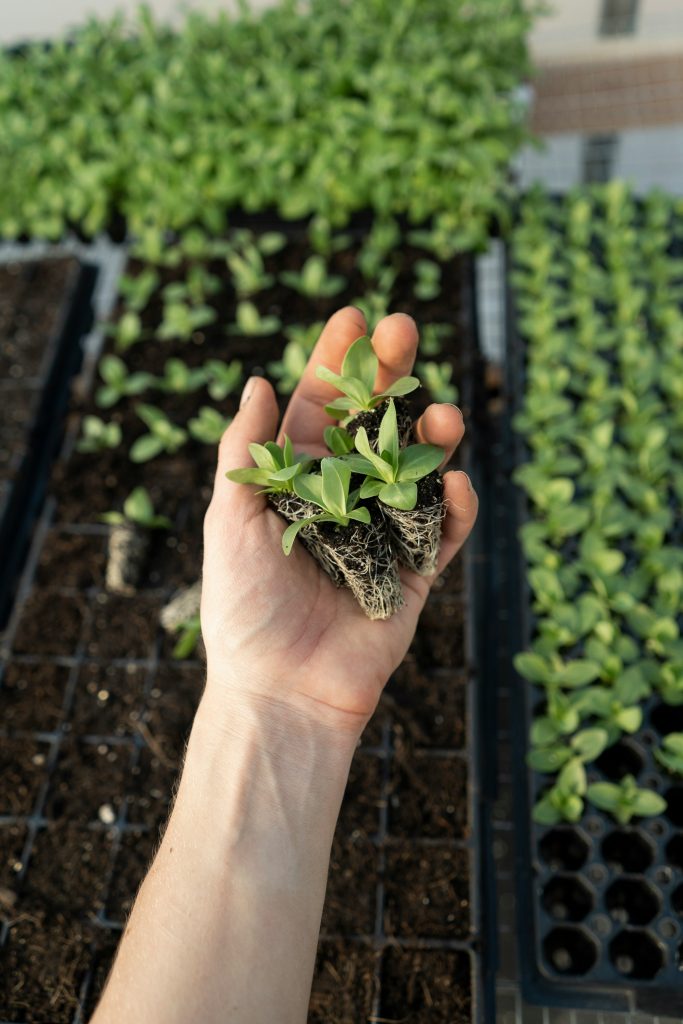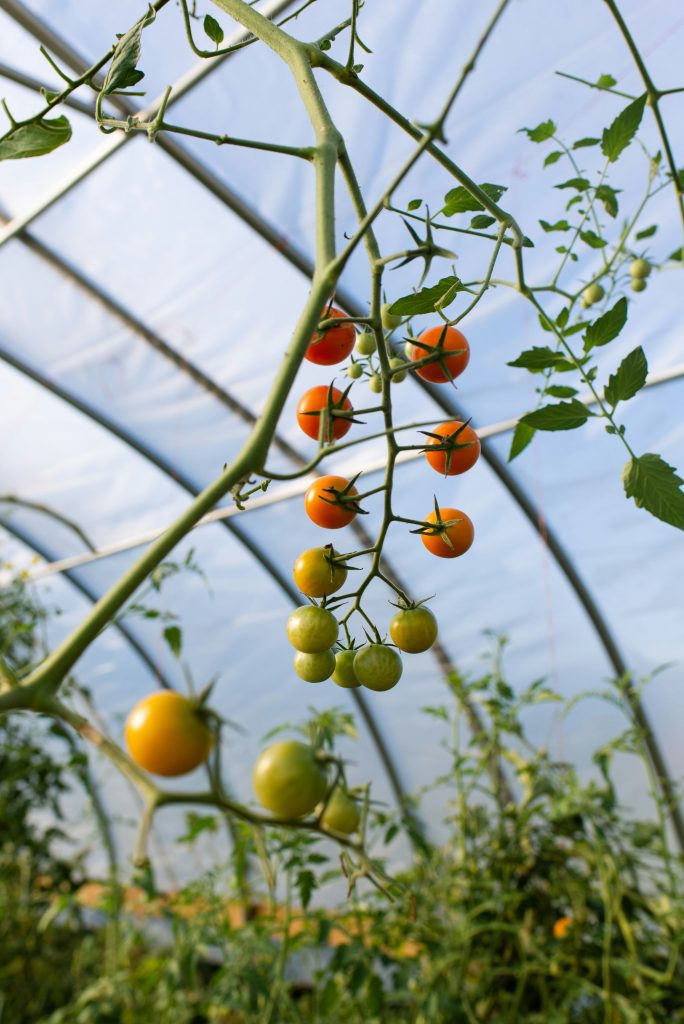Introduction
Eco-friendly greenhouse construction refers to the use of sustainable building practices and materials to create a greenhouse that is not only beneficial for plants but also for the environment. With the increasing concern about climate change and the need for sustainable practices, eco-friendly greenhouse construction has become a popular choice among farmers and gardeners. This article will explore the benefits of eco-friendly greenhouse construction, materials, designing, renewable energy sources, water conservation, eco-friendly pest control, sustainable agriculture practices, and certification and standards for eco-friendly greenhouses.

Benefits of Eco-Friendly Greenhouse Construction
There are several benefits of eco-friendly greenhouse construction. Firstly, it reduces energy consumption. By using sustainable building practices such as proper insulation and efficient lighting and ventilation systems, energy usage can be significantly reduced. This not only saves money on energy bills but also reduces greenhouse gas emissions.
Secondly, eco-friendly greenhouse construction lowers the carbon footprint. The use of recycled materials, natural materials, and sustainable materials reduces the need for new resources and minimizes waste. This helps to reduce the greenhouse gas emissions associated with the production and transportation of building materials.
Thirdly, eco-friendly greenhouse construction improves air quality. By using natural materials and low-VOC paints, indoor air quality is improved. This is beneficial for both plants and humans working in the greenhouse.
Lastly, eco-friendly greenhouse construction can lead to increased crop yields. By optimizing the design and using sustainable practices such as proper insulation and efficient lighting and ventilation systems, the growing conditions can be improved. This can result in healthier plants and higher yields.
Materials for Eco-Friendly Greenhouse Construction:
When it comes to materials for eco-friendly greenhouse construction, there are several options available. Recycled materials such as reclaimed wood, glass, and metal can be used. These materials not only reduce waste but also give a unique character to the greenhouse.
Natural materials such as bamboo, straw bales, and adobe can also be used. These materials are renewable and have a low environmental impact. They provide excellent insulation and can create a natural and aesthetically pleasing greenhouse.
Sustainable materials such as FSC-certified wood, recycled steel, and low-VOC paints are also popular choices. These materials are sourced from responsibly managed forests and have a lower impact on the environment compared to conventional materials.
Designing an Eco-Friendly Greenhouse
Designing an eco-friendly greenhouse involves several considerations. Passive solar design is one of the key principles. This involves orienting the greenhouse to maximize sunlight exposure and using thermal mass to store heat. Proper insulation is also important to keep the greenhouse warm in the winter and cool in the summer. Efficient lighting and ventilation systems help to reduce energy consumption.
Renewable Energy Sources for Greenhouses
Renewable energy sources can be used to power greenhouses. Solar panels are a popular choice as they can generate electricity and provide hot water for the greenhouse. Wind turbines can also be used to generate electricity, especially in areas with high wind speeds. Geothermal systems can be used to heat and cool the greenhouse by utilizing the constant temperature of the earth.
Water Conservation in Greenhouses
Water conservation is crucial in greenhouses to minimize water waste and reduce the strain on water resources. Rainwater harvesting is a common practice where rainwater is collected from the roof of the greenhouse and stored in tanks for later use. Drip irrigation systems deliver water directly to the roots of plants, reducing water waste. Greywater recycling involves using wastewater from sinks, showers, and washing machines to water plants.
Eco-Friendly Pest Control
Eco-friendly pest control methods are essential in maintaining a healthy and sustainable greenhouse environment. Integrated pest management (IPM) is a holistic approach that combines various methods such as crop rotation, physical barriers, and biological controls to control pests. Natural predators such as ladybugs and praying mantises can be introduced to the greenhouse to control pests. Companion planting involves planting certain plants together to repel pests naturally.
Sustainable Agriculture Practices
Sustainable agriculture practices are important in eco-friendly greenhouse construction. Crop rotation is a practice where different crops are planted in the same area each year to reduce soil erosion and nutrient depletion. Organic farming methods involve using natural fertilizers and pesticides instead of synthetic ones, reducing the impact on the environment. Composting is another sustainable practice where organic waste is used to create nutrient-rich soil for plants.
Certification and Standards for Eco-Friendly Greenhouses
Certification and standards play a crucial role in ensuring that eco-friendly greenhouses meet certain criteria and adhere to sustainable practices. LEED certification is a rating system that evaluates the environmental performance of buildings, including greenhouses. Energy Star rating is a program that identifies energy-efficient products, including greenhouse equipment. The Greenhouse Gas Protocol is a standard for measuring and reporting greenhouse gas emissions, helping greenhouses track and reduce their carbon footprint.
Conclusion
Eco-friendly greenhouse construction is essential for a sustainable future. By adopting eco-friendly practices in agriculture, we can reduce our impact on the environment, save money on energy bills, and create healthier growing conditions for plants. It is important for farmers and gardeners to consider eco-friendly greenhouse construction for their next project and join the movement towards a more sustainable world.
If you’re interested in the benefits of using eco-friendly products in greenhouse construction, you might also want to check out this article on “Going Green: Making the Switch to Biodegradable Cleaning Supplies” from Eco Friendly Home and Garden. It provides valuable insights into how using biodegradable cleaning supplies can contribute to a more sustainable and environmentally friendly lifestyle. By opting for these products, you can reduce your carbon footprint and minimize the negative impact on the planet. So, if you’re looking for ways to make your greenhouse construction project more eco-friendly, this article is definitely worth a read. (source)
FAQs
What are eco-friendly products?
Eco-friendly products are those that are made from sustainable materials and have a minimal impact on the environment. They are designed to reduce waste, conserve energy, and minimize pollution.
What are the benefits of using eco-friendly products in greenhouse construction?
Using eco-friendly products in greenhouse construction can help reduce the environmental impact of greenhouse operations. These products are often made from renewable materials, such as bamboo or recycled plastic, and can help reduce energy consumption and greenhouse gas emissions.
What are some examples of eco-friendly products that can be used in greenhouse construction?
Some examples of eco-friendly products that can be used in greenhouse construction include recycled plastic lumber, bamboo, and sustainably harvested wood. Other options include energy-efficient lighting and heating systems, as well as water-saving irrigation systems.
How do eco-friendly products help reduce energy consumption in greenhouses?
Eco-friendly products can help reduce energy consumption in greenhouses by providing better insulation and reducing the need for heating and cooling systems. They can also help reduce water consumption by providing more efficient irrigation systems.
What are some other benefits of using eco-friendly products in greenhouse construction?
Other benefits of using eco-friendly products in greenhouse construction include reducing waste, conserving natural resources, and improving air and water quality. These products can also help create a healthier and more sustainable environment for plants and people alike.



